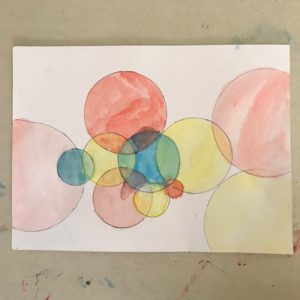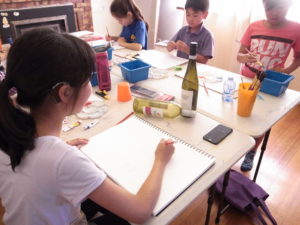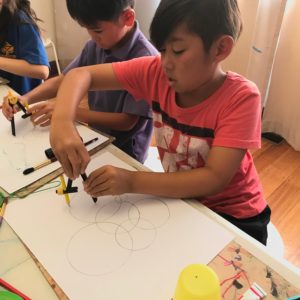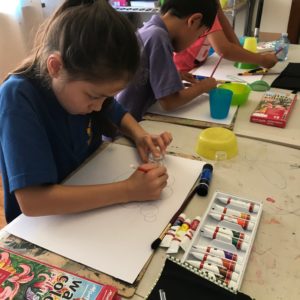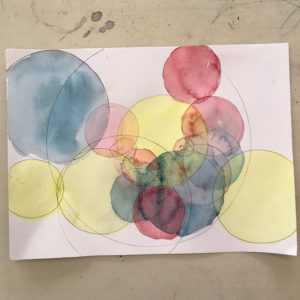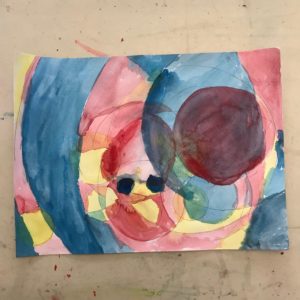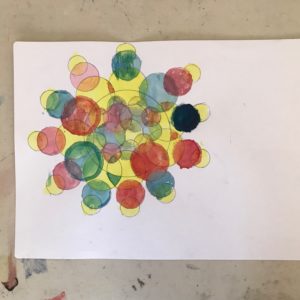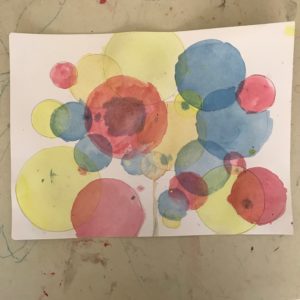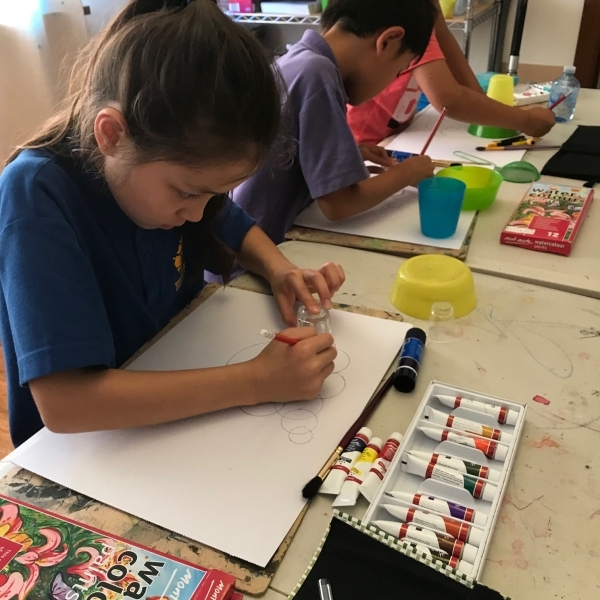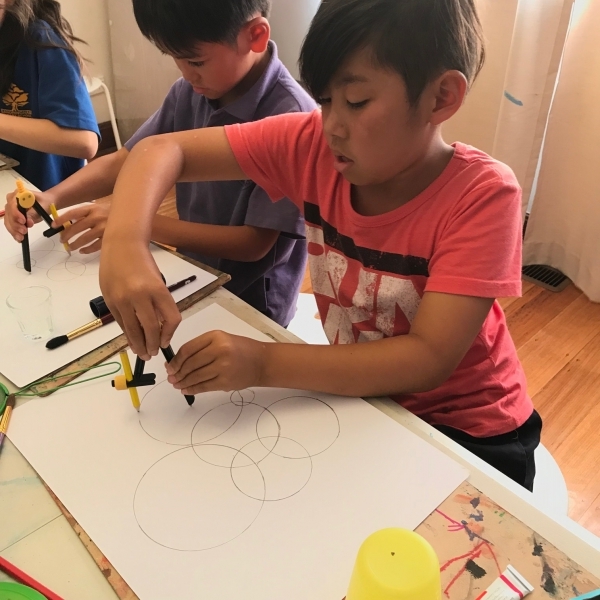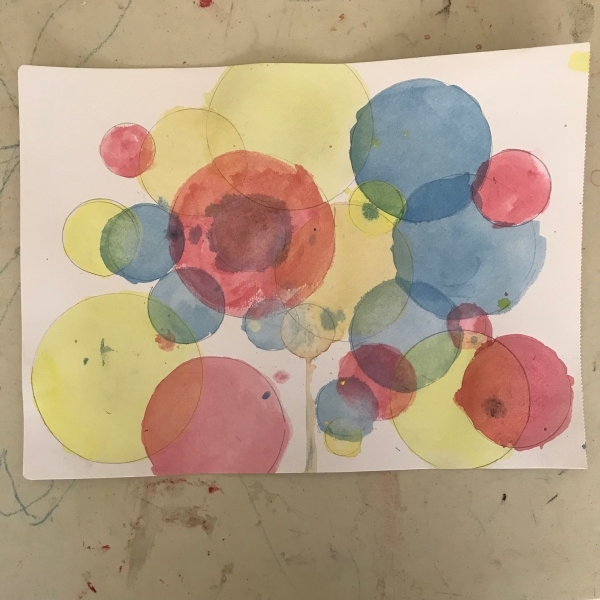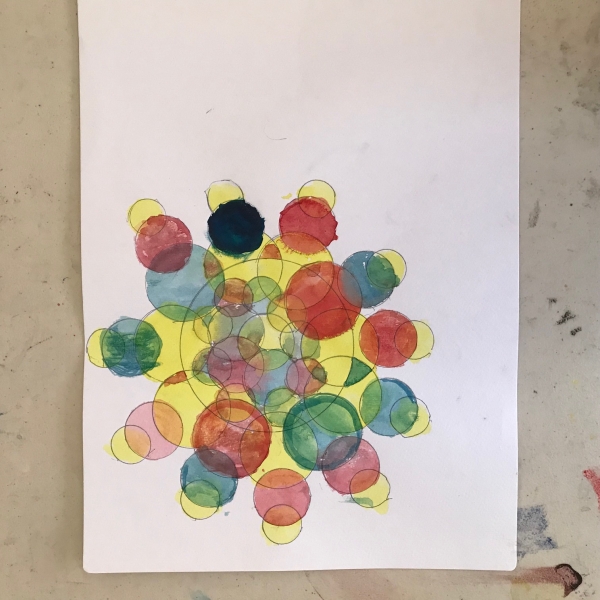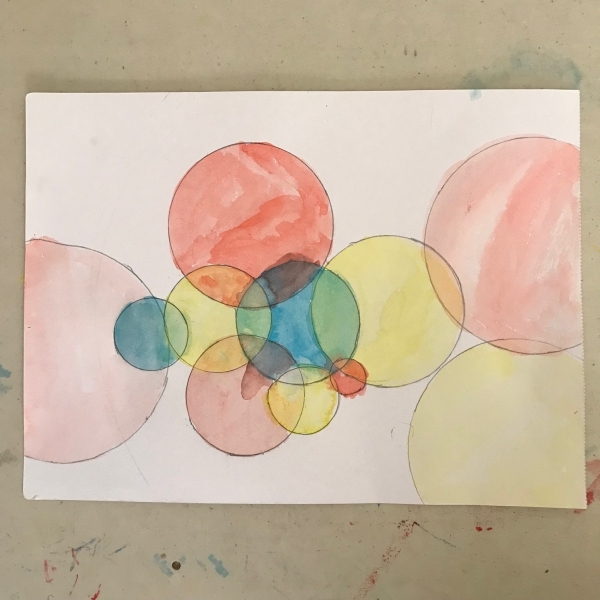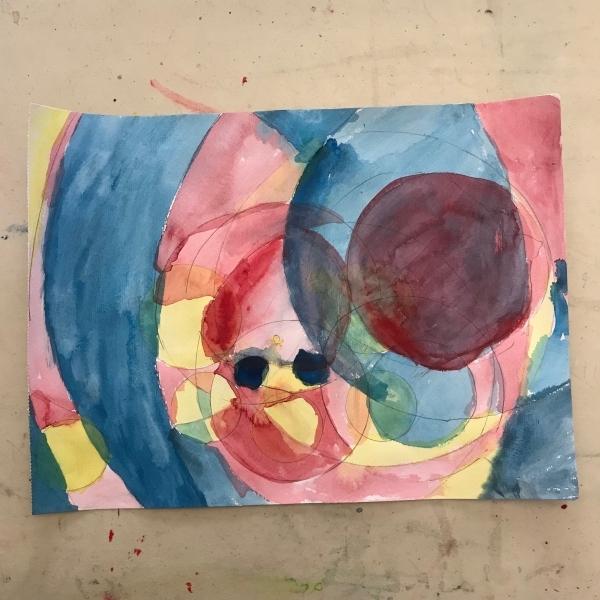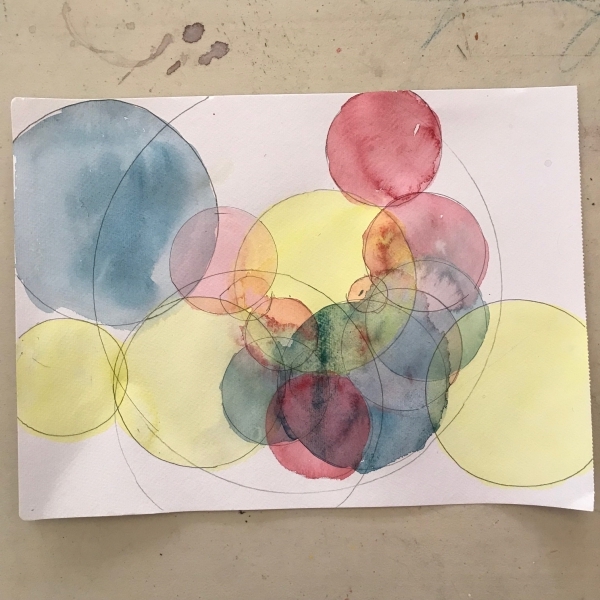三原色って聞いたことありますか?
その三原色で絵を描きました。
火曜プライマリーキッズクラス
先ずは三原色のご紹介。
三原色とは、赤・青・黄の3つの純色(混ぜてできない色)のこと。
これら3つの色を混ぜて(混色)して、紫・緑・橙などの中間色(純色以外の色)ができます。
三原色の概要はこんなとこです。
その三原色で絵を描いていくのが今回の課題で、狙いは「混色かどのように起こるかを学ぶ」です。
なんだか科学の実験みたいですが、美術なんですよ〜
また、このクラスで一緒に美術をしている中学生の生徒さんはクロッキーと呼ばれる短時間で対象(物や人)描く課題をしました。
3分から5分の間で、一枚を描く時間を設定して描きます。
通常の描く時間より極端に時間が短い分、描く対象のポイント(形や陰影など)を絞って描きます。
短時間で描く対象を捉えるスキルを磨きます。
三原色の課題では、画用紙に丸を描き、そこに三原色を塗っていきます。
子供たちは構図(丸を画用紙の何処に描くか)を真剣に考えていました。
言葉で説明すると難しくて分からないことも、描いて目で見ることですんなり理解できることもあります。
視覚的な経験と理解は、子供たちにとって重要な意味を持つと思います。
完成した作品は、それも構図が面白く色も素敵なものとなりました。
Slideshow of Primary-Kids class as above
Blog in English
Have you heard “Three primary colours” before in any place?
The three primary colours, which are red, blue and yellow, each of which cannot be created by mixing colours so that the primary colours themselves are recognised as primary.
Orange, green and purple are created by mixing two primary colours and those three colours are categorised as secondary colours.
For instance, orange can be blended with red and yellow.
Those three colours are principle ingredients of any colours you see around you and the three colours cannot be generated by blending colours. This is what we call the three colours as the three “primary” colours.
Another important content in the lesson was Speed sketch in which sketching subject(s) in a short time (3 to 5 mins).
This was presented for a secondary student in this class and Speed sketch is good to strengthen selection skills for drawing what points (shape, shade and shadow and volume) are supposed to be selected in a manner of a short-time sketch.
So, moving towards what we experienced in the lesson here.
First, the primary colours painting, we drew various sizes of circles on paper and then the circles were coloured by three watercolour paints, which were the three primary colours, such as red, blue and yellow.
Next, the circles were painted with the three primary colours while no colours mixing on a palette was recommended.
Each colour applied on a paper dried when another colour was allowed to be applied to colours, which were painted earlier.
Meanwhile, mixing colours and mixing colours effect occurred on paper and this eased children to follow how colours can be changed.
I know that an explanation why things that happen in words that it is very important to be performed.
However, in a way of painting, an explanation to children (sometimes not even children) in a visual manner is preferable because an understanding of painting is taken place using lots of visual senses.
In many cases, I believe that visions can help to introduce things for learners, in particular, such a visual explanation is good for children.
Pictures below show paintings by children in the lesson, all of which is considerably unique.

